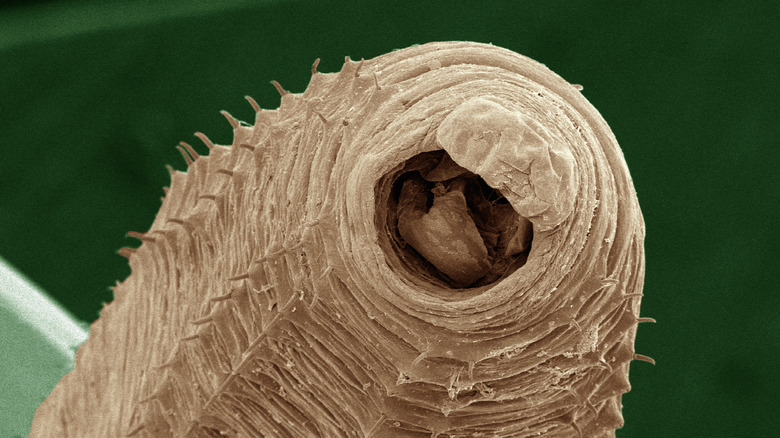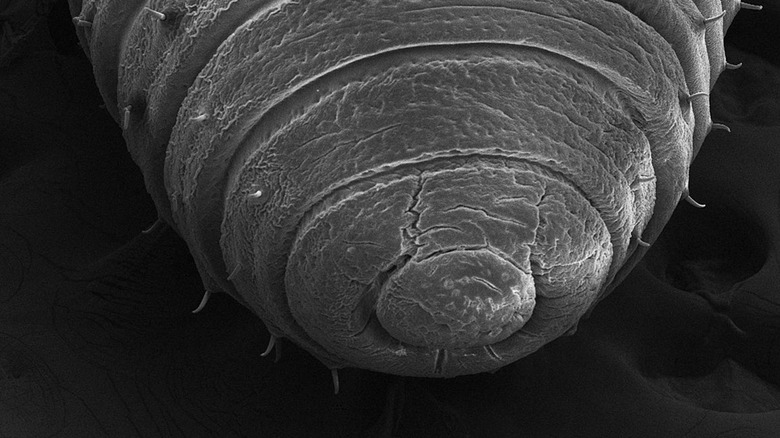The Terrifying Appearance Of Earthworms Under A Microscope Is Straight Out Of A Sci-Fi Movie
It shouldn't be all that surprising that some insects look downright terrifying under a microscope. It's not as if the creatures are widely known for their majestic beauty in general, though specific species, such as butterflies, certainly are. If you've ever seen a butterfly wing under a microscope, you'll know that these winged insects are just as beautiful in extreme closeup as they are in everyday life. Which sort of proves the point. The creatures that already look appealing, also appear that way under a microscope. Those that give us the creeps, however, look pretty disturbing under a microscope.
Ants, to use one example, look like some sort of alien species at high magnification. And tapeworms? Well, it's a nothing short of a horror show — as you might expect. But what about the humble earthworm? Sure, they're not all that appealing, but they don't really fulfill all the criteria of a creepy crawly, since they're conspicuously lacking in the "crawly" part of that phrase. They're also not actually insects but invertebrates belonging to the phylum Annelida. As such, you might expect them to look at least a little less alarming than insects. Alas, it turns out earthworms look just as terrifying in closeup, if not more so.
Microscopes reveal a deeply upsetting earthworm anatomy
Unlike a tapeworm, earthworms are harmless creatures that actually have some major benefits. Most notably, their ability to break down dead and decaying organic matter helps soil fertility and therefore directly contributes to plant growth. The worms also help in this regard by digging channels in the soil which can improve aeration and drainage.
Sadly, they don't really look all that great. Earthworms are segmented invertebrates which lack eyes, ears, or a nose so you're already off to a bad start on the attractiveness scale. Things only get worse from there, with the first segment of the earthworm (known as the peristomium) featuring a mouth with a small lobe above. This lobe is called the prostomium and is an extremely important part of earthworm anatomy. Not only does this lobe cover the mouth, earthworms also use their prostomium to navigate their environment, feeling their way through the soil and using the lobe to create openings.
With all that in mind, you're hardly going to be shocked to hear that earthworms don't look all that great under a microscope. At least they're not quite as nerve-witheringly upsetting as a tapeworm. If anything, extreme closeups of earthworms reveal creatures that wouldn't be all that out of place in "Dune," although I don't remember the sand worms having any sort of prostomium, which, perhaps unsurprisingly, turns out to be the most visually troubling aspect of closeup earthworm anatomy.

